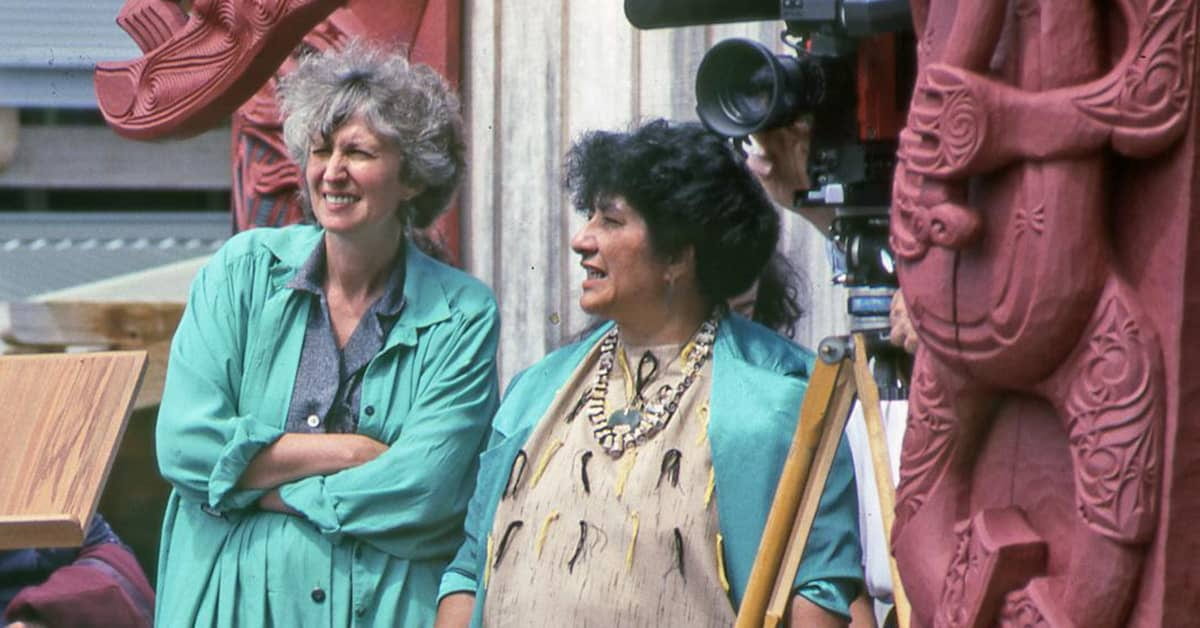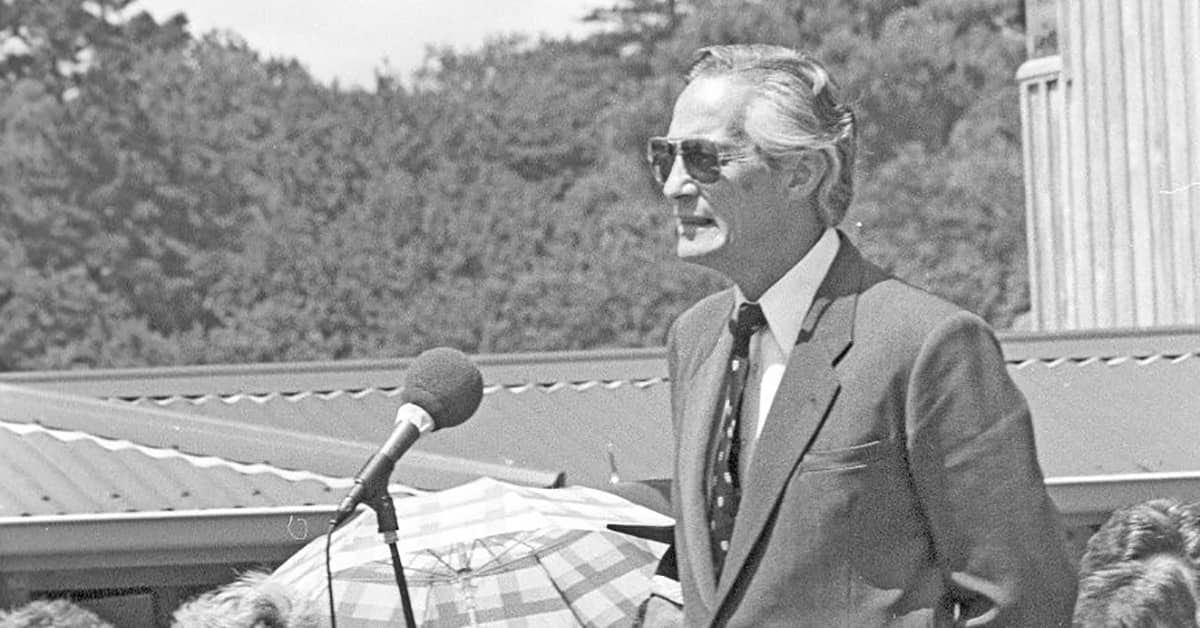Featured image: Waitangi Tribunal member Professor Hugh Kawharu speaking at the opening of Waipapa Marae in 1988. Professor Hugh Kawharu by Maureen Launder, Anthropology Photographic Archive, CC BY-NC-ND 3.0.
On 10 October 1975 the Waitangi Tribunal was established as part of the Treaty of Waitangi Act 1975.
The Waitangi Tribunal is a standing commission of inquiry. It makes recommendations on claims brought by Māori relating to legislation, policies, actions or omissions of the Crown that are alleged to breach the promises made in Te Tiriti o Waitangi.
The Treaty of Waitangi Act 1975 was the legacy of Matiu Rata, the Minister of Māori Affairs and of Lands in the third Labour government. Although it fell short of his initial vision of full legal ratification of Te Tiriti o Waitangi, Rata still viewed the Act as “a major document of social and political progress” which would help “settle the deeply felt and long-standing grievances of the Māori people over the treaty, which they regard as the very foundation of their rights.”
The Tribunal was controversial and contested in its early existence, but after 45 years is now largely an accepted part of life in Aotearoa. For Dr Hirini Kaa, Kaiārahi in the Faculty of Arts, this is a sign of its success. “I think a lot of people seem to assume that it’s done its job and it’s kind of disappeared,” he explains. “That’s partly a sign that it’s done its job so well. It’s become a natural part of what we do.”
“Who would have thought in 1974 that we were capable of this?”
 Image: For Dr Hirini Kaa, the Waitangi Tribunal represents true partnership in its membership and ways of working.
Image: For Dr Hirini Kaa, the Waitangi Tribunal represents true partnership in its membership and ways of working.
“But some of the critique of the Tribunal is that it’s been extremely pragmatic,” he continues. “The other way of looking at that is that it hasn’t been the disruptor that people were hoping for, therefore it’s kind of faded into the background.”
Abigail McClutchie, Kaiārahi in Te Tumu Herenga – Libraries and Learning Services, is one of those who hoped for more disruption. “Whenever I hear ‘Waitangi Tribunal’, I think it’s a missed opportunity to enact binding transformation,” she says. “But I have the utmost respect for all the lawyers, judges, and tangata whenua who have done their best to meet the aspirations of Māori through it.”
Dr Tiopira McDowell has interviewed claimants and their negotiators with Professor Margaret Mutu. He says that “the sad irony is that, 45 years on, the Waitangi Tribunal is being impeded by the very process it was established to enable.”
“Māori should not have to apply to a commission of inquiry, with no binding powers to enforce its findings, to uphold their legal rights, those rights should be embedded in law.”
 Image: Muriwhenua claimant researcher Waerete Norman (right) with Dame Anne Salmond at the opening of Waipapa Marae in 1988. Detail of Whina Cooper, Anne Salmond, Waerete Norman by Andree Brett, Anthropology Photographic Archive. CC BY-NC-ND 3.0.
Image: Muriwhenua claimant researcher Waerete Norman (right) with Dame Anne Salmond at the opening of Waipapa Marae in 1988. Detail of Whina Cooper, Anne Salmond, Waerete Norman by Andree Brett, Anthropology Photographic Archive. CC BY-NC-ND 3.0.
For Hirini, the Tribunal has been an important bridge between the pākehā world and te ao Māori. “One of the things to not underestimate with the Tribunal is how its process has evolved to find a balance between western ways and mātauranga Māori,” reflects Hirini. “You get these prophetic statements of justice that go on the New Zealand record about what happened, and recommended ways of atoning for it. It’s really important for a national identity to have this kind of truth.”
The Waitangi Tribunal has up to 20 members, and Associate Professor Aroha Harris from the University of Auckland is a current member. Many people from the University have been involved in the Tribunal, both as members and claimants.
Professor in Māori Studies, Sir Hugh Kawharu was a member of the Waitangi Tribunal from 1986-1996. His papers are archived in Special Collections at the General Library, including a wealth of material relating to his time with the Tribunal.
We are also lucky enough to have the papers of his Māori Studies colleague and Muriwhenua claimant reseacher, Waerete Norman. These include 58 cassette tapes recording hearings for the Muriwhenua claim from 1986 to 1988, and extensive documents that show the work involved in the claims process.

